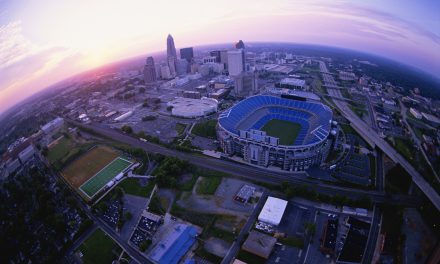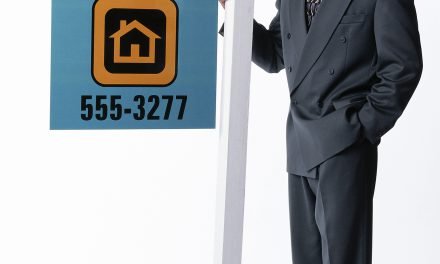Real estate marketing has become a fierce competition among agents to see who has the best gadgets — and the Federal Aviation Administration (FAA) just elevated the playing field.
The FAA recently issued modified regulations for the commercial use of small unmanned aerial vehicles (UAV) or unmanned aircraft systems (UAS), commonly known as drones. In the context of real estate, drones are most often used for filming aerial footage of home listings, marketing footage, and other visual media to promote an agent’s business or properties listed for sale.
Prior to the new regulations, real estate agents and other entrepreneurs had to undergo a rigorous certification, registration and waiver process under an archaic set of regulations known as Section 333 before being allowed to use drones for simple real estate filming purposes. The adoption of drones was a prime example of technology moving faster than regulations needed to protect society.
Now, however, the regulations have finally caught up. The new regulations, known as Part 107, make drones more accessible to agents by simplifying permissions and guidelines for drone use.
In order to use drones, agents (or the certified drone aviation professionals they hire) need to:
- hold or be supervised by a holder of a remote pilot airman certificate with a small UAS rating;
- pass a background check by the Transportation Security Administration (TSA); and
- be at least 16 years old (mostly irrelevant since agents need to be at least 18 years old as a requirement of licensure).
Agents qualify for a remote pilot airman certificate by either:
- passing an aeronautical knowledge test at a testing center approved by the FAA; or
- holding a Part 61 pilot certificate (other than student pilot), completing a flight review within 24 months prior to certification, and completing an online training course for small UAS flight.
The FAA estimates the cost of an aeronautical knowledge test with a small UAS rating will be approximately $150, although final costs have yet to be determined. Costs for a Part 61 pilot certificate vary depending on the type of certificate issued, although estimates range from $3,000 to $9,000. Part 61 certifications surpass the necessary parameters for operating drones; this requirement typically applies to those already certified under Part 61.
Drone qualifications and use
Agents who qualify for operating drones under Part 107 also need to ensure the drones they use meet certain requirements.
To qualify for commercial use, drones need to be:
- no greater than 55 pounds, including any attached equipment (such as cameras);
- inspected prior to flight by the agent; and
- constantly in the agent’s unaided visual line of sight (VLOS).
Additionally, drones may NOT fly:
- over any person who is not involved with its use;
- under a covered structure;
- inside a stationary vehicle or outside a moving vehicle;
- more than 100 miles per hour;
- more than 400 feet above ground; or
- outside Class G airspace, which consists of unregulated airspace not used by other aerial vehicles (unless specially permitted).
Editor’s note — For a thorough understanding of various airspace designations, view this guide.
Drones may only be used during daylight hours, defined as 30 minutes before official sunrise to 30 minutes after official sunset, according to the agent’s local time.
How agents can use drones for real estate
Tech-savvy agents ought to consider drones as a way to distinguish their real estate marketing. Drones are increasingly common in professional enterprises, especially since smaller drones — like the ones agents can use under Part 107 regulations — are cheaper and more accessible than ever before.
Although most agents have yet to use drones in their real estate business, drones’ popularity is rising. Initially, agents are most likely to hire certified professionals intimately familiar with all the regulations to fly drones for them versus going through the certification process themselves.
Drones improve existing visual marketing media by allowing more expansive and unique video content for video listings and home tours. Aerial views of a home can help a browsing buyer vividly picture the character of the neighborhood, the overall size of the house and the unique amenities it may have, like a sprawling backyard, ornate patio or water features.
Additionally, drones are far cheaper than alternative digital media technologies. For do-it-yourself agents, drones of reasonable size for commercial use range from $70 and up, depending on the particular features and additional tech included with each model. Agents looking to get started can check out UAV Coach’s list of 17 Cheap Drones for Beginners (Under $150) or RC Hobbies on Air’s list of 60+ Cheap Drones for Beginners.
In comparison, virtual reality technology can cost up to a few thousand dollars — plus the added cost of a digital rendition by a virtual reality designer to create and edit videos. Virtual reality is currently more popular for incomplete construction projects which rely on buyers’ imagination to fuel pre-sales. Alternatively, drones are more appropriate in the context of exhibiting existing structures.
Drones help agents keep up with visual technology in an industry that heavily relies on sensory experience. Just as location, location, location was the mantra of old, look, look, look may become the latest real estate fundamental to be pioneered by the new generation of agents. Buyers who like what they see in an online listing with a video are more likely to visit an open house or make contact with the agent — a critical advantage for agents to possess as the industry transitions to largely digital correspondence.
Agents, how do you use or foresee using drones in your real estate marketing? Let us know what you think in the comments below!














